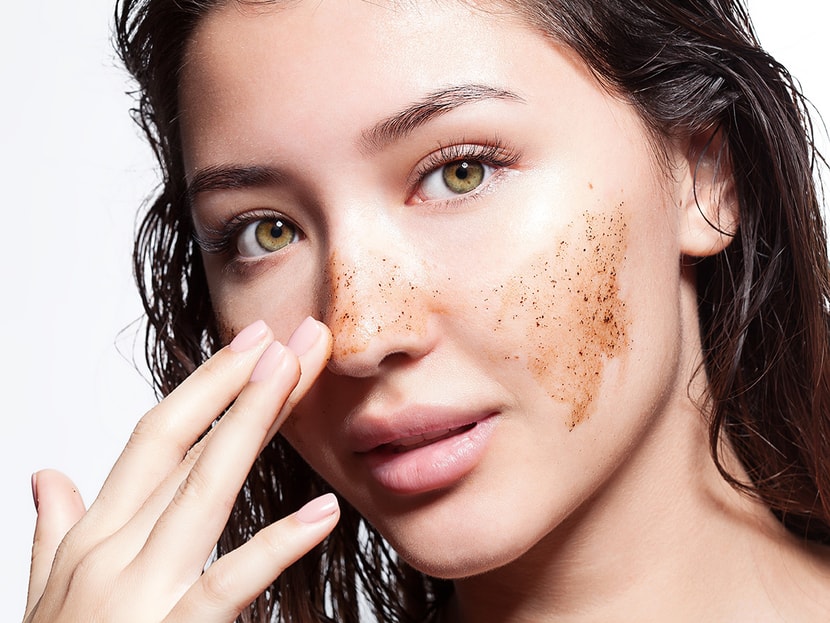Most of us know that skin exfoliation is an important step in skin care. But not everyone knows exactly how it works or why. Many people remain confused as to the frequency in which they should be exfoliating their skin. How often is enough or too much? Here is a quick explanation on the process of skin exfoliation and how it benefits your skin.
What is Skin Exfoliation?
Skin exfoliation is a process in which the upper most layer of your skin, consisting of dead skin cells and debris, is removed through mechanical, chemical or enzyme treatment.
Why Exfoliate?
The removal of dead skin cells, oil, dirt and debris will instantly leave your skin looking fresh and feeling clean. Regular exfoliation will give your skin a smooth texture, clear complexion, healthy tone and beautiful glow. By incorporating exfoliation into your skincare regimen, you will not only be preventing skin congestion and break out, but you will also be fighting against premature aging by assisting in accelerating regeneration of healthy skin cells.
 Types of Skin Exfoliaton:
Types of Skin Exfoliaton:
As mentioned above, there are three main types of skin exfoliants – mechanical, chemicaland enzyme. Each type offers various methods of exfoliation that work for different skin types. If you are familiar with your skin type, you can decide on which form and method of exfoliation will work best for your skin.
Mechanical Skin Exfoliants –
- Facial Sponges, Buff-Puffs and Washcloths: These manual exfoliating tools are used on the skin to remove surface dead skin cells through physical friction. They should always be used on damp skin, avoiding blemished areas to prevent irritation.
- Facial Scrub: Facial scrubs offer moderate skin exfoliation and are gentle enough to be used once a day, everyday. Most facial scrubs will use finely ground rice, nuts (usually almond) or fruit seed (apricot) to polish the skin, revealing a more clean and clear surface. There are also some scrubs that utilize jojoba micro beads, which have a smoother texture and are less abrasive on the skin. Facial scrubs are suitable for all skin types, except very fragile skin. A scrub should never be applied to acne skin, as it can spread infection and cause painful irritation.
- Microdermabrasion: Microdermabrasion can be performed both at home and at a spa. The at-home versions of microdermabrasion come in a cream form and work much like a facial scrub. The granules present in a microdermabrasion cream are much smaller than that of a scrub, made from aluminum or magnesium oxide crystals. Microdermabrasion creams are recommended for all skin types except sensitive and acneic and can be used two to three times a week. Regular use will keep the skin looking healthy, youthful and radiant. There are two microdermabrasion treatments offered at the spa. The original microdermabrasion treatment utilizes a machine which propels a high-speed flow of aluminum oxide crystals onto the skin, while the machine’s vacuum system sucks away dirt, dead skin cells and used crystals. The newer and now more popular microdermabrasion treatment is known as the “diamond peel”. The diamond microdermabrasion system replaces the micro-crystal flow with a disposable or reusable diamond tip wand. This allows areas closer to the eyes and mouth to be treated more precisely, without the risk of stray crystals causing damage or being ingested. Spa grade microdermabrasion is appropriate for all skin types and are performed in multiple sessions for best results.
Chemical Skin Exfoliants –
- AHA/BHA Peels: AHA, aka Alpha-Hydroxy Acid and BHA, or Beta-Hydroxy Acid, are the most commonly known chemical skin exfoliants, which can be used at home. Glycolic, lactic and fruit acids are AHA’s that produce a light to mild exfoliation by removing the outermost surface layer of your skin through the loosening of the glue-like substance that holds the dead skin cells together, while speeding up cell renewal. AHA’s will help to control skin congestion, reduce the appearance of enlarged pores, balance your skin tone and reduce fine lines and wrinkles. Although AHA peels are easily done from home, they are still offered at spas at a professional strength of over 30%, which are not available over the counter. AHA peels can be used on all skin types, with caution toward sensitive skin. BHA acids, such as salicylic acid, work just as AHA’s, but are used primarily on problematic and acneic skin, due to it’s healing properties. AHA/BHA’s, depending on strength, can be used several times a week or on a daily basis.
- Trichloroacetic Acid (TCA) and Phenol Peels: The TCA and phenol peels are only offered through a dermatologist or plastic surgeon. These chemical peels are highly potent and require down time for recovery. The results of a TCA or phenol peel are smoother texture, brightened tone, and tighter, younger looking skin. This method of exfoliation is extreme and costly. These high-grade peels are recommended for more serious skin treatments like the removal of scarring or severe hyperpigmentation.
Enzyme Skin Exfoliants –
- Papain (papaya enzyme) and Bromelin (pineapple enzyme) are the most widely used enzyme skin exfoliation treatments. Exfoliation with the use of enzyme therapy works to dissolve the dead skin cells sitting on the surface of the skin. This method of exfoliation is the least aggressive and rarely produces a negative reaction on the skin. All skin types will benefit from daily use of enzyme treatments.
- Protease enzymes are the newest form of enzymatic exfoliation. Proteolytic enzymes mimic the role of your body’s own natural protease enzymes to promote decay of protein impurities, dissolution of dead skin cells and acceleration of cell renewal. This type of skin exfoliation works best when used daily and is suitable to all skin types, including sensitive. As with other methods of exfoliation, protease enzymes will give your skin enhanced clarity and suppleness, but without the risk of any irritation.
As you can see, exfoliation is crucial to the health and overall appearance of the skin. With so many forms and methods of exfoliation available, you are bound to find the one that best suits your skin type. Just be sure to always try new skin care treatments with caution and ease. Over exfoliation will cause your skin to dry out and possibly break out, while not exfoliating often enough could lead to congestion and dullness of your skin. Proper and consistent skin exfoliation is an easy way to keep your skin healthy and looking beautiful.


 Types of Skin Exfoliaton:
Types of Skin Exfoliaton:


